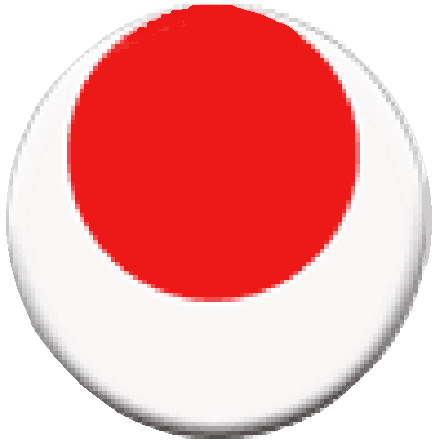|
 |
| Calligraphy for Kumite |
|
In kumite two men face off demonstrating defensive
and offensive techniques ensuring that while the techniques are being
performed that balance is not lost.Basically kumite can be considered
the application of fundamentals learned in kata. In the dojo, the Sensei
would always advise that training for improvement in kata is absolutely
necessary for the improvement in kumite. The senior masters of the JKA
always stress that Kata and kumite are like the two wheels of cart. In
the early days, jiyu Kumite was unknown and it was only with the introduction
in the universities of Japan that modern karatekas took to Jiyu Kumite
as a means to test their skills against one another. Funakoshi Dai Sensei
was however against this practice stressing mainly on the training of
kata and it was only after his demise that the first Kumite Tournament
was held.
While learning karate in the Dojo, the student
goes through three phases of kumite training
The three types of kumite are kihon kumite, jiyu ippon kumite and jiyu
kumite.
1) Yaksoku Kumite:
The term Yaksoku means promised. In this kumite the two players face each
other at a designated interval and after determining which technique is
to be practiced take turns at offensive and defensive roles. In this type
of sparring, the attacker must make a prior commitment to attack with
only the promised technique to the designated area. This is also known
as Kihon Kumite and is the most basic type of kumite.
There are different types of kihon kumite -
a) Gohon kumite (where the roles of defence and attack are enacted
in 5 steps)
b) Sanbon kumite(where the roles of defence and attack are enacted
in 3 steps)
c) Kihon ippon kumite (where the roles of defence and attack are
enacted in one step)
d) Kaeshi Ippon Kumite (An innovation of the kihon ippon kumite,this
type of kumite is
usually practiced in the dojo where the defender counterattacks with a
whole step and forces the attacker to defend himself.
e) Okuri ippon Kumite (In this variation the attacker makes two
attacks of which only the
first is announced or predetermined.The second attack is the attacker's
choice based on the distance and other factors
f) Jiyu Ippon Kumite: The attacker is free to choose his stance
and interval between his opponent and makes an offensive move after announcing
which techniques he is going to apply. The opponent is free to choose
a defensive technique.
2) Jiyu Kumite: In jiyu Kumite
the opponents are free to apply any techniques attacking freely with offensive
kicks, strikes and punches as in an actual combat situation. The attacks must
have maximum power but must stop short of coming in contact with the opponent's
body.
 |
The
calligraphy reads Ikken hisatsu meaning
" kill with one blow"
This is emphasized in Shotokan Training and every novice is
made aware of this. It is based on this concept that the rules
of Karate Matches were first formulated and to date the JKA
system still follows on Ippon system where an Ippon is awarded
for a killing blow |
|
KUMITE MATCH (Free Style sparrings):
Free-style sparring consists of a match between two contestants. Both
contestants must both attack and defend while attempting to get in a "killing"
blow by means of an appropriately placed punch strike or kick. This
"killing" blow must be stopped just short of the target. The distance
the attack is stopped should be close enough so that if not stopped but
let to follow through, it would actually strike the target (face, neck
or mid - section). It must be remembered by the contestants that
to actually strike the opponent with such a blow is dangerous as it could
be fatal and therefore STRICTLY PROHIBITED.
It is for this reason therefore only Karate players senior and mature
enough having the ability to exercise a very precise control over all
their movements are allowed to participate in these matches. Such players
normally are black belt holders.
|



